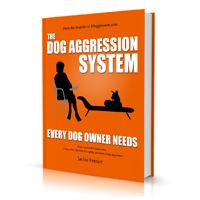Your cart is currently empty!
5 Harsh Realities of Treating Dog Aggression
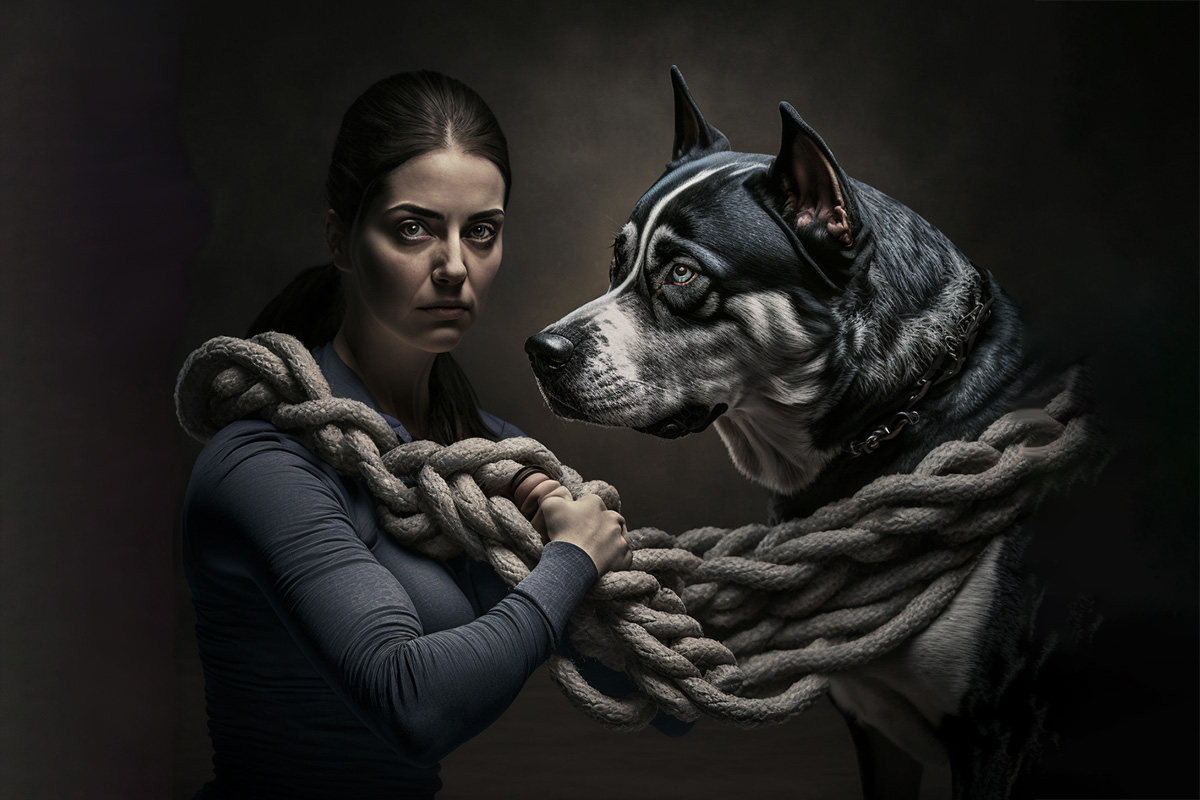
On the surface treating dog aggression – if not a simple fix – can at least appear to be relatively straightforward. Teach your dog to do something that is incompatible with aggressive behavior. How hard can that be?
Well, after the initial cycle of excitement and enthusiasm, there is the inevitable wake-up call to reality. This is going to be a little harder than you thought. It is at this critical moment when you start to wonder if you have got what it takes; if your dog is beyond help; if whether you even want to keep your dog.
When you know what to expect, it’s easier to hang in there. In fact, the more you learn, the more interested you will probably become. With that in mind, here goes…
1. Dog Aggression is More Than Just a “Behavior”
While it’s relatively easy to train a dog to behave in one way or another, such as sit, come when called, go to a mat and lie down, aggression is part of whole internal set of emotional and physiological responses in response to frustration or a perceived threat. Many of these responses are involuntary.
Aggression could even be seen as a coping mechanism of sorts in response in that there are certain neurochemical payoffs in behaving aggressively, such as the release of a neurotransmitter called dopamine. We associate this neurochemical with the pleasurable feelings we get from eating or shopping or even drugs, but it is also associated with focus and attention. Because the release of dopamine probably offsets the sense of dread anxiety and fear produces, punishing aggression is likely only a distraction.
So aggression may have more than one function serving to not only protect the dog from external threats, but also relieve feelings of frustration, dread and/or anxiety.
When we look at aggression this way, especially keeping in mind that much of the response is involuntary, we can start to understand why it takes time to improve aggression.
Because aggression is not just a simple behavior it in part explains punishing aggression is not usually not effective long term (if it’s not outright dangerous) nor why simply trying to give treats to a dog doesn’t improve aggression very well either.
It helps to need to have some understanding of what is going on underneath the behavior in order to adjust their attitude. You need to understand that the dread produced as a result of anxiety is not a choice and that the anxiety makes them feel they need to do something about it – urgently.
Take away:
This all means that changing it in any significant will take time and require patience.
2. Too Few Of Us Take Prevention And Management of Our Dog’s Aggression Seriously Enough.
Well, besides the obvious stress mentioned above, the harsh reality is that most of us do not take the prevention seriously enough. Sure, it’s great that we are feeding your dog treats every time our dog spots the target of his or her aggression. It’s far better than using a prong collar, shock collar or choke chain to manage the aggression, absolutely.
But our first inclination is to change our lives as minimally as possible, and we resort to controlling our dogs and unnecessarily exposing our dogs to stressful situations instead of avoiding those situations altogether.
Any time your dog practices anything, the neurons in the brain – the very cells that communicate with one another – fire faster and become more efficient. It doesn’t matter if it is a behavior or an internal response. If your dog is getting anxious at training sessions and is unable to relax, the neural network for that anxiety process is likely getting stronger and more efficient.
What is more concerning is that stronger neural networks dominate over other weaker neural networks in the brain. In other words well practiced brain processes bully out brain processes that are less practiced. This is why it can be so hard to replace bad habits with alternative good behaviors!
The goal of management and prevention of anxiety and aggression is to weaken the neural network involved in the anxiety/aggression sequence. This is the only way other alternative behaviors have a chance at becoming the dominant neural network in the brain.
What we forget is that when we take the effort to avoid situations that causes our dog to be stressed or aggressive, we are calmer, too!
Take away:
When we don’t take prevention seriously, it can take a long time to make significant change.
3. Most Don’t Take Action to Manage Our Dog’s Stress – Or Our Own
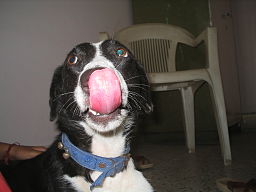
Stress is the building block to aggression for our dogs, and burn out for us. Unfortunately stress builds up and make us more reactive than we might if there was no earlier stress. It may help explain why our dogs seem to be calm one day, but reactive the next. There may have been other stresses that we haven’t noticed or acted soon enough to control.
Here are just a few things that might be stressing your dog out
- Allowing anyone to pet our dog. Any dog that wants to be petted makes it obvious. But surprisingly, many dogs do not enjoy it (especially on the head or back). Or they might tolerate it from their humans but don’t like it from strangers. This can be stressful
- Smaller dogs often get stressed when we reach down for their collar.
- Your dog is unable to predict when things happen – good or bad. Unpredictable occurrences can cause stress.
- Boredom. Many dogs spend hours alone with nothing to engage with. Boredom can causes a great deal of stress
- Not allowing your dog to sniff on walks. A dog experiences a great deal tough their nose, and for the short time we are outside with them we don’t let them enjoy it for very long.
- We make light of situations where we know they feel anxious – not just the things that they are aggressive towards. Like nail trims or thunderstorms.
Additionally, when your dog becomes aggressive, the physiological responses that occurred in response to the stress do not disappear right away. Some changes in response to stress last for hours, others for days, and even weeks. Chronic stress can makes us unable to regulate and respond to future stressors.
In this way, aggression can become a vicious circle which each episode fueling the next.
For us, we need to manage our lives so we aren’t taking on extra stress either. We need to prevent and manage the aggression so we are not constantly having to be vigilant about our dog’s behavior. We need to work with our dogs when we have the time to focus.
Here are a few things that can help:
- Learn the ways in which your dog communicates stress. Lip licking, turning their head away, ears pinned back, stiffness in how they hold their body, these are just some of the signs to look for.
- Practice the “Consent test” for any dog that is not giving clear signals they want to be petted. This involves petting the dog for a few seconds and then stopping. What does your dog do? If the dog stands there without approaching you, they are only tolerating it. If they turn their head away, move away from the petter, lick their lips, etc. then they may be actively stressed by it.
- Build in signals that prepare your dog for when things are going to happen (as long as it does not cause anticipatory anxiety for your dog). For example, departures and arrivals can be stressful: arrange to have a light turn on a half hour before you arrive home.
- Does your dog have a fear of thunderstorms? Perhaps there is some desensitizing you can do, or medication that could help. Talk to a vet. If your dog hate nail trims or have footwear or coats put on in the cold winter, desensitize and counter condition them to make it easier for them.
- Work with your dog when you aren’t tired or stressed yourself. Work on relation work so that you aren’t communicating tension to your dog. Be patient. It’s a marathon, not a sprint
- Don’t get caught up in the “training for perfection” trap. Take time to enjoy the relationship you have with your dog. But don’t be afraid to take breaks either.
Take away:
If we don’t reduce stress in our dogs lives, aggressive behavior can be slow to change. If we don’t manage stress in our own, we can be vulnerable to burn out
4. Just Because Your Dog Has Learned a Behavior Doesn’t Mean That it Has Become Automatic.
There is a difference between something learned and something that has been overlearned. Overlearning is the process where something becomes habit. In other words, the behavior takes less conscious thought to perform and therefore less self-control to accomplish.
Why is this important? Because half the time when dog owners start trying to do desensitization and counterconditioning, their dog’s ability to sit calmly (calm being the key word here) is not even an automatic behavior in non-threatening situation.
Doing anything that requires conscious thought uses up resources in the brain. It uses up self-control. While self-control is like a muscle that can be developed, every time we do something that requires self-control or any kind of executive functioning in the brain, we use up brain resources. That means if your dog’s ability to sit calmly is learned but not yet automatic, they are using up resources processing what you want rather than using those resources toward keeping their cool instead.
So don’t expect your dog can do more than they can do. Don’t let down your guard and don’t expect too much when you experience what feels like a setback.
Take away:
Changing a dog’s behavior and overcoming established habits takes a lot of repetition and patience.
5. Fear is not Forgotten, Caution will Always Be Needed

Trainers are familiar with the term extinction. Extinction is the gradual weakening and disappearance of a learned response. When we work with our dog and their triggers, we are trying to make the aggression response extinct.
But extinction is not the same as forgetting. It is a relearning process – what is defined as inhibitory learning. Unfortunately it takes longer and is more fragile than fear learning. A fear response that has thought to become extinct can re-appear under stress, over time, or if the part of the brain that is involved in inhibiting the fear response is otherwise occupied on another mental task.
That is why we need to continue to monitor our dogs for stress and anxiety even after significant improvement has been made in our dog’s aggression problem.
Take away:
Old behaviors can take be retriggered under certain conditions. The more stress that a dog is carrying or the more anxiety or fear the dog is experiencing the more likely the behavior will occur. Therefore we should continue to practice prevention and caution.
It’s easier to treat dog aggression when we know what to expect
You don’t need to be a rocket scientist to improve dog aggression, but it does help if you know what is involved and where the traps can lie. Understanding these 5 realities about treating dog aggression can help you avoid some of the common mistakes people make with their dogs.
ADVERTISEMENT
The Dog Aggression System Every Dog Owner Needs E-book
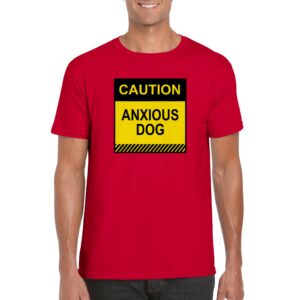
Anxious Dog Shirts only available in our shop
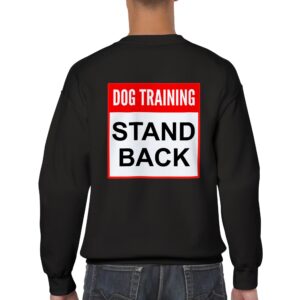
Keep people away with our Stand back shirts

